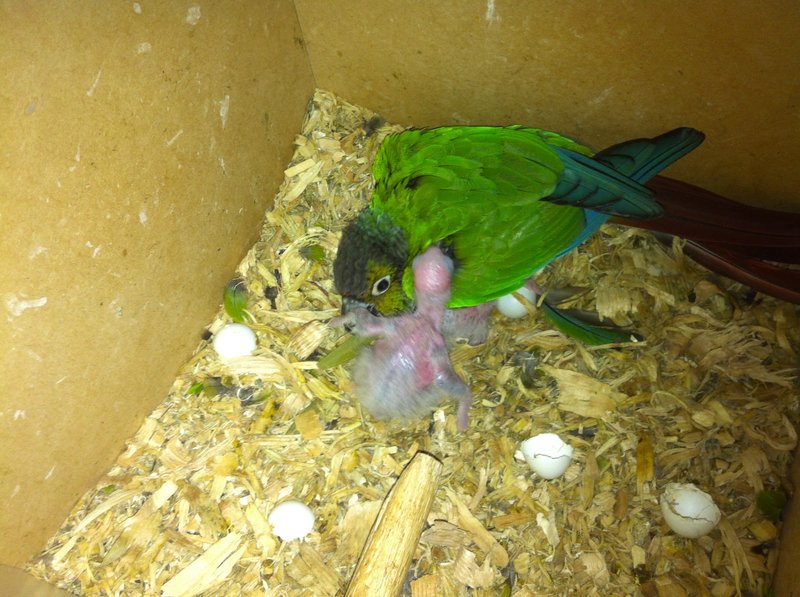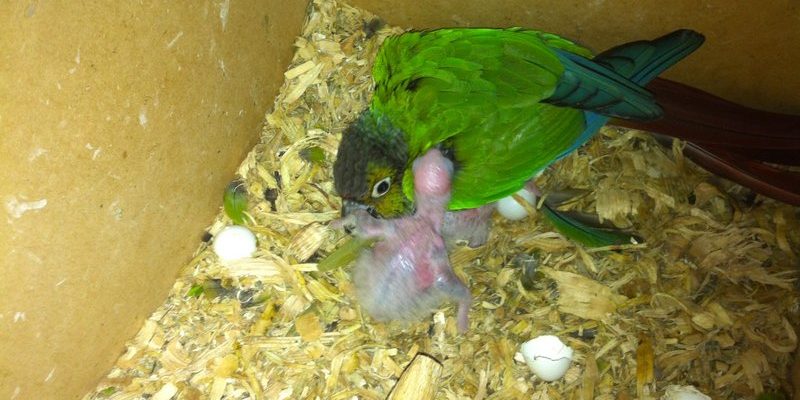
Conures come in various types, such as the Green-cheeked Conure or the Sun Conure. Each type has its quirks, but the essence of their nesting habits remains similar. The lifecycle of a conure, from egg to adulthood, is a journey filled with challenges and triumphs. So, let’s dive into this colorful world and discover what makes conure nesting so unique!
Where Do Conures Nest?
Conures are native to Central and South America, and they have a knack for finding the coziest spots to build their nests. Typically, these birds prefer to nest in tree cavities. You might think of them like treehouse builders, searching for the perfect nook that’s high off the ground and safe from predators.
In the wild, conures often look for old woodpecker holes or natural hollows in trees. These cavities provide shelter from harsh weather and a little privacy from curious eyes. Nesting in trees isn’t just about comfort; it’s also strategic. Being high up gives them a better vantage point to spot potential threats. It’s like having a penthouse suite in the bird world!
When conures are kept as pets, they’ll need an appropriate nesting box to mimic their natural habitat. Choosing the right box is crucial, as it should be made of safe materials and designed with the right dimensions. A well-placed nesting box encourages your conure to feel secure and encourages them to lay eggs when they are ready.
What Materials Do Conures Use for Nesting?
Just like any good project, building a nest requires the right materials. Conures are quite resourceful and often use a variety of items to create a cozy home. Here’s a peek at what they might gather:
- Twigs and branches – These provide structure and stability.
- Leaves and grass – Soft and comfortable for lining the nest.
- Feathers – Sometimes, conures will even use their own feathers to line the inside, adding extra warmth.
In the wild, conures might also use pieces of coconut husks or even bits of bark to fortify their nests. It’s honestly impressive how they’ll use what’s around them to create a safe space for their eggs.
If you have a pet conure, you can help by providing safe materials for nesting, like shredded paper or natural grass. Just ensure that nothing is treated with chemicals or dyes, as safety is key for your feathered friend.
The Breeding Process
Once a pair of conures has found a suitable nesting site and gathered their materials, the real magic begins. After some courtship rituals, which may involve playful chirping and dancing, the female will lay her eggs. Here’s where you might be wondering, how many eggs do they usually lay?
Well, conures typically lay between three to eight eggs per clutch. After the eggs are laid, the female takes on the bulk of the incubating duties, although the male will often help out by bringing food. Incubation lasts about 24 days, and during this time, the female will sit on the eggs to keep them warm and protected.
You can imagine it like a tiny, feathery family waiting for the big day when the little ones will finally break free from their shells. The excitement must be palpable in their little world!
Life as a Baby Conure
When the eggs finally hatch, baby conures, also known as chicks or hatchlings, are born blind and featherless. They rely entirely on their parents for warmth and nourishment. This stage is a crucial time in their development, as they are completely dependent on their parents.
Initially, the parents will feed their chicks regurgitated food, which is packed with the nutrients they need to grow. Over the next few weeks, you’ll see those little chicks start to change — they’ll develop feathers, open their eyes, and begin to move around the nest.
By around 6 weeks old, the chicks will begin to venture out of the nest, exploring their surroundings. It’s during this phase that they start learning essential life skills, such as foraging and social interactions, which are crucial for their survival in the wild.
Seeing a baby conure take its first steps is like watching a toddler take its first wobbly steps — you can’t help but smile!
Leaving the Nest and Independence
As the chicks approach 8 weeks old, they start to become more independent. They’ll begin to spend time away from their parents, learning how to find food and socialize with others. At this point, they’re also more curious about the world around them, often flapping their wings excitedly.
It’s a bittersweet moment for the parents because, while they’re proud of their young ones, it means the end of their parenting duties. The chicks will continue to rely on their parents for a little longer, but eventually, they’ll take flight and start their own lives.
In captivity, it’s important that owners give baby conures enough socialization and stimulation during this stage. This prepares them for their new home, ensuring they grow up healthy, happy, and well-adjusted.
The Importance of Nesting for Conures
Nesting habits are crucial for conures, not just for reproduction, but for their overall well-being. A suitable nesting environment provides safety, comfort, and a space for raising their young. It’s their way of ensuring the survival of their species.
When conures have a proper nesting setup, they’re more likely to engage in natural behaviors, leading to healthier and happier birds. For pet owners, understanding the significance of a good nesting environment can enhance the bond between them and their feathered friends, as it shows an awareness of their natural instincts.
Creating a safe and engaging space for your conure can also reduce stress and encourage great behavior. If you’re considering adding a nesting box for your pet conure, make sure to observe how they interact with it. It can provide insightful clues about their comfort and happiness.
Understanding the nesting habits and lifecycle of conures is not just fascinating; it also enriches our relationship with these charming birds. From their meticulous nesting preparations to the joy of watching baby conures grow, there’s much to appreciate about their natural behaviors.
Whether you have a pair of conures at home or simply want to learn more about these delightful creatures, knowing their nesting habits can make you appreciate them even more. So, the next time you see a conure, take a moment to think about all the effort that goes into raising their young and creating their cozy homes in the trees. It’s a reminder of how intricate and beautiful nature can be!

